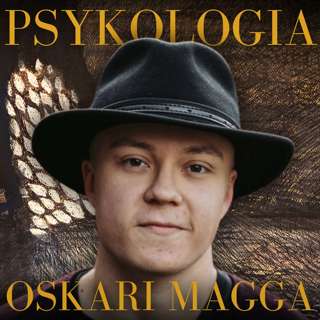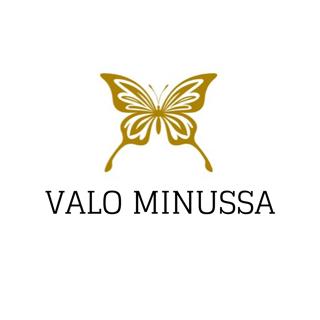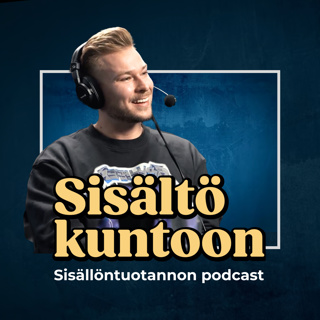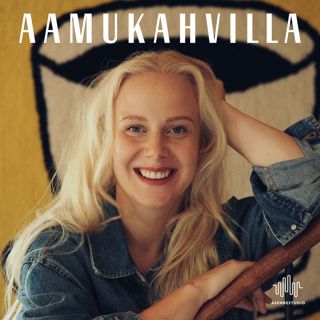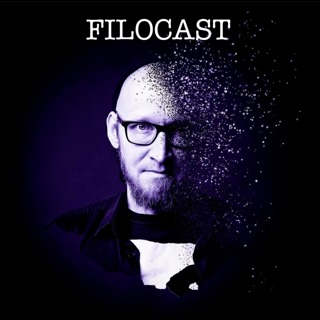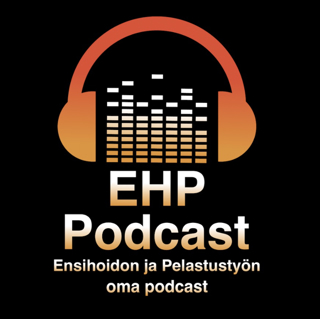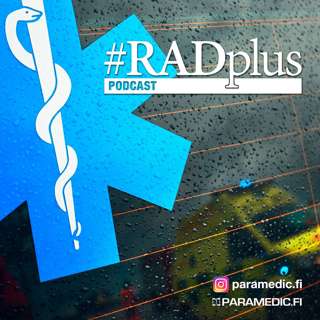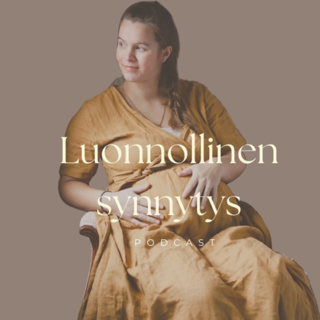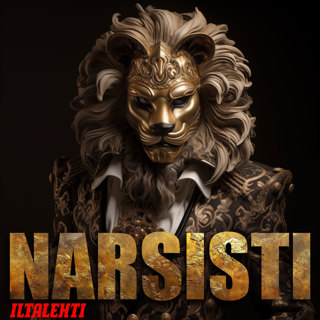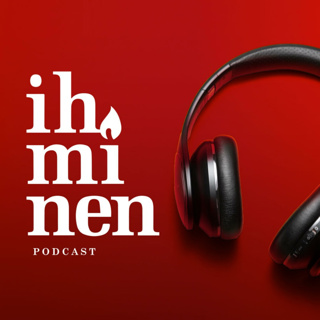
Ep. 198 Privademics and Advantages of Lesser Known Community Programs with Dr. Shamit Desai & Dr. Saud Ahmed
Interventional radiologists Dr. Shamit Desai and Dr. Saud Ahmed discuss the advantages of community training programs including practice building, resident and attending relationships, and diversity of job opportunities after training. --- CHECK OUT OUR SPONSOR DI4MDs Protect your most valuable asset, the skill and ability to practice your medical specialty. Be prepared by establishing a specialty specific disability insurance policy from the experts at DI4MDs. Contact them today at www.Di4MDS.com or call 888-934-4637. --- EARN CME Reflect on how this Podcast applies to your day-to-day and earn AMA PRA Category 1 CMEs: https://earnc.me/Bxnlqq --- SHOW NOTES In this episode, host Dr. Aaron Fritts interviews Dr. Shamit Desai and Dr. Saud Ahmed, interventional radiologists at Franciscan St. James, about advantages of community training programs including practice building, resident and attending relationships, and diversity of job opportunities after training. The three begin by discussing current IR training pathways, and what Franciscan St. James offers. Dr. Ahmed is the PD for the early specialization in interventional radiology (ESIR) spot at their program, which has been running for three years. They have 3-4 radiology residents per year, and the diagnostic radiology residency is well established. There are no fellows there, which allows residents ample hands-on experience from the beginning of residency, and facetime with attendings. Next, we discuss the advantages that a small community hospital affords. At their institution, both the IR department as well as the radiology residents have the opportunity to build rapport and trust with referring providers. This is how they are able to build the practice base that is often taken for granted at an academic institution. The community hospital also gives residents more clinical experience; they are taking the IR consults as first years, collaborating on clinical management and rounding with attendings. Lastly, we discuss the benefit of an ESIR program compared to the integrated IR pathway. They discuss how the diagnostic radiology training is uncompromised which prepares trainees very well for job opportunities after training. They argue that having trained in a community setting makes you more marketable when applying for jobs, especially in private practice. The residents at St. James are prepared to go into practice with a broad diagnostic and interventional skill set, but also understand how to be efficient with procedures and build a practice, which is a huge advantage that is simply not taught at academic institutions. --- RESOURCES Franciscan St. James Radiology: https://www.franciscanradiology.com SIR ESIR Program List: https://www.sirweb.org/learning-center/ir-residency/esir/ SIR Integrated IR Program List: https://www.sirweb.org/learning-center/ir-residency/integrated/
4 Huhti 202247min

Ep. 197 CERAB Technique for Aortoiliac Disease with Dr. Martin Schroeder
Vascular surgeon Dr. Martin Schroeder discusses the Covered Endovascular Reconstruction of Aortic Bifurcation (CERAB) technique for treating aortoiliac disease, including patient workup, procedure steps, and pitfalls to avoid with stent placement. --- CHECK OUT OUR SPONSOR RADPAD® Radiation Protection https://www.radpad.com/ --- EARN CME Reflect on how this Podcast applies to your day-to-day and earn AMA PRA Category 1 CMEs: https://earnc.me/08Esyf --- SHOW NOTES In this episode, vascular surgeon Dr. Martin Schroeder and our host Dr. Sabeen Dhand discuss the CERAB (Covered Endovascular Reconstruction of Aortic Bifurcation) procedure with all of its steps, including planning, arterial access, recanalization, reconstruction. First, Dr. Schroeder emphasizes that CERAB is ideal for patients with TASC C and TASC D lesions. For planning purposes, he prefers CT angiogram to MRI, since CT is better at showing calcifications and previous stents. At this stage, he measures the intraluminal area. Next, he gains percutaneous ultrasound-guided groin access, and he uses a ProGlide preclose system. He takes an endovascular measurement of the aortic diameter and places a covered stent above the aortic bifurcation. Generally, Dr. Schroeder says that it is ideal to stent below the inferior mesenteric artery, but it can be covered if needed. He flares the proximal end of the stent in order to oppose the graft onto the aorta, create a seal, and prevent a Type I endoleak. Finally, Dr. Schroeder reviews the placement of the iliac stents, the last step in creating a new aortic bifurcation. He shares his 15/15 rule: aortic stent placed 15mm above the aortic bifurcation, and iliac stents placed 15mm within the aortic stent. His general CERAB tips include advancing the sheath before uncovering the stent, making sure that you are always in the intimal space, and staying calm and focused. --- RESOURCES Vascupedia CERAB Webinar: https://vascupedia.com/video/the-cerab-technique-from-a-to-z-part-1/ VBX Stent: https://www.goremedical.com/products/vbx
1 Huhti 202236min

Ep. 196 Building a PE Response Team with Dr. Carin Gonsalves
We talk with Interventional Radiologist Dr. Carin Gonsalves about how her practice built a multidisciplinary Pulmonary Embolism (PE) Response team, including where to start, developing efficient workflows, and obtaining the equipment you need for success. --- CHECK OUT OUR SPONSOR Inari Medical https://www.inarimedical.com/ --- SHOW NOTES In this episode, hosts Dr. Michael Barraza and Dr. Aaron Fritts interview Dr. Carin Gonsalves, interventional radiologist, about building a pulmonary embolism response team (PERT) and the evolution of pulmonary embolism (PE) treatment including large bore suction thrombectomy devices and the importance of multidisciplinary effort in care of patients with PEs. Dr. Gonsalves discusses how she came to be Division Director of the PERT program at Jefferson University, and her collaborations with Geno Merli, cofounder of the PERT Consortium. Her interest in advancing PE treatment stemmed from her years of performing pulmonary arteriography and catheter directed thrombolysis before the inception of suction thrombectomy devices. She discusses the difficulty she had in obtaining these new devices, and how after 11 months of discussions, the hospital agreed to purchase the necessary equipment to enable the PE response team. She discusses how the PERT is activated when a patient presents with suspected PE. Her team is comprised of five subspecialties including IR, Pulmonary Critical Care, Vascular Surgery, Cardiothoracic Surgery, and Cardiology. She emphasizes how having a group of experts improves patient care by cutting down on critical decision time. She enjoys sharing the responsibility of evaluating treatment approaches based on the current literature and the diversity of experience in the group. Finally, we discuss advances in technology for treatment of PE. Dr. Gonsalves enjoys the ease of use and wide range of clots she can treat including acute, subacute and chronic. These devices have been game changers for PE; many patients are poor surgical candidates and have contraindications to thrombolysis. They end by discussing novel uses of these devices that Dr. Gonsalves performs including removal of clot in transit (mobile clot in the IVC, SVC, RA or RV) and vegetations on the tricuspid valve or a pacemaker lead. --- RESOURCES The PERT Consortium: https://pertconsortium.org Inari PEERLESS RCT: https://www.inarimedical.com/peerless/ Inari FlowTriever: https://www.inarimedical.com/flowtriever/ Inari ClotTriever: https://www.inarimedical.com/clottriever-int/ Inari FlowSaver: https://www.inarimedical.com/flowsaver/ AngioVac: https://www.angiovac.com
28 Maalis 202238min

Ep. 195 Disclosures of Conflicts of Interest with Dr. Mina Makary
Our hosts Dr. Aparna Baheti and Dr. Michael Barraza talk with Dr. Mina Makary about what constitutes a conflict of interest, and how we can reduce bias in research without stifling innovation. Reflect on how this Podcast applies to your day-to-day and engage to earn AMA PRA Category 1 Credit(s)™ via point-of-care learning activities here: https://earnc.me/WV7gzp --- CHECK OUT OUR SPONSOR RADPAD® Radiation Protection https://www.radpad.com/ --- SHOW NOTES In this episode, our hosts Dr. Ally Behati and Dr. Michael Barraza interview Dr. Mina Makary about his recent article with the Applied Ethics in IR Working Group about physician conflicts of interest and disclosures in image-guided research publications. Dr. Makary walks us through the study design. The analysis over one year of JVIR articles had two goals. Firstly, the study aimed to assess the prevalence of disclosures in US-based IR research. Additionally, the researchers inspected the level of agreement between disclosed financial relationships and open payment data for top-cited image-guided procedure research. Since 2013, the open payment data has been available on the CMS Open Payment database. Key results showed that disclosures were reported in 29% of JVIR publications in 2019. When comparing reported versus actual financial relationships, it was found that 97% of researchers failed to disclose at least one active financial relationship. Furthermore, there was an average of $58k in undisclosed payments for each publication. Finally, we discuss important takeaways from this study. While industry support is a necessary driver of IR device innovation and practice building, it can influence research agendas. Dr. Makary advises all IRs to be cognizant of the underreporting of financial relationships and how this could make authors implicitly or explicitly biased in their research. He advocates for the construction of an open global registry that automatically links payment information to research disclosures. --- RESOURCES Potential Bias in Image-Guided Procedure Research: A Retrospective Analysis of Disclosed Conflicts of Interest and Open Payment Records: https://pubmed.ncbi.nlm.nih.gov/34756998/ In Science We Trust? (A response to the above study): https://www.jvir.org/article/S1051-0443(21)01446-9/fulltext CMS Open Payments Database: https://openpaymentsdata.cms.gov/
25 Maalis 202229min

How We Talk About Race, and the Language of Oppression with Tawny Newsome and Elaine Martin
Dr. Vishal Kumar invites Tawny Newsome and Elaine Martin to the show to discuss how we talk about race, and the language of oppression. --- EARN CME Reflect on how this Podcast applies to your day-to-day and earn AMA PRA Category 1 CMEs: https://earnc.me/rnCu1p --- SHOW NOTES We begin by discussing the JAMA tweet from 2021, reading “No physician is racist, so how can there be structural racism in health care?”. Newsome relates this to arguments she hears often from the tech industry stating that algorithms and computers cannot be racist. She adds that humans created the programs and wrote the medical journals, which means that biases will be present, and that neither computers nor physicians are entirely objective, and both can indeed be racist. Next, the three discuss the power of language, and the critical relationship of language and the biases we hold. Elaine Martin speaks to her experience as a nurse in San Francisco, and what she notices about the language that is used when interacting with patients. She reflects on how medical providers' choice of language can be dismissive or hurtful to patients. She shares experiences from her family members interactions with medical providers, and how she has learned to communicate with patients differently based on these experiences. They discuss a New York Times article by Rachel Gross about the linguistic origins of the pudendal nerve and its ties to patients with pudendal neuralgia who feel shame due to their condition. Finally, our guests give advice to current medical trainees. They discuss how we can examine our current structures and systems and change them where we identify problems. They express their hope that future generations of medical providers will take the time to examine their biases and dismantle harmful and dismissive treatment of marginalized groups. --- RESOURCES Tawny Newsome's Instagram, Twitter: @trondynewman, Subscribe to Tawny's podcasts: @suboptimalpods Yo, Is This Racist? Instagram, Twitter: @yoisthisracist Elaine Martin LinkedIn: https://www.linkedin.com/in/elaine-martin-4b618128/ JAMA: https://jamanetwork.com/journals/jama Taking the 'Shame Part' Out of Female Anatomy by Rachel Gross: https://www.nytimes.com/2021/09/21/science/pudendum-women-anatomy.html Vishal Kumar, MD: https://radiology.ucsf.edu/people/vishal-kumar
21 Maalis 202234min

Ep. 194 Financial Basics from the White Coat Investor with Dr. James Dahle
Special guest The White Coat Investor James M. Dahle talks with Christopher Beck about where physicians can start when it comes to financial literacy, including common financial mistakes docs make when start practicing, a primer on mortgage rates, and tips on insurance. --- CHECK OUT OUR SPONSOR DI4MDs Protect your most valuable asset, the skill and ability to practice your medical specialty. Be prepared by establishing a specialty specific disability insurance policy from the experts at DI4MDs. Contact them today at www.Di4MDS.com or call 888-934-4637. --- SHOW NOTES In this episode, White Coat Investor founder Dr. James Dahle and our host Dr. Chris Beck discuss strategies for physicians seeking to manage their personal finances and gain financial freedom. First, Dr. Dahle explains the reasoning behind the famous quote, “live like a resident.” He explains that for an early career physician, their greatest wealth-building tool is their income. The income jump from residency to attending years can be extremely useful for quickly paying off student loans. Then, he moves on to discuss another way to resolve student debt, the Public Service Loan Forgiveness (PSLF) program. This option is ideal for physicians who have spent a significant amount of time working for a nonprofit institution (for example, during training and in academic medicine). Dr. Dahle advises all physicians to reflect on their priorities when deciding where to allocate their assets. Possible categories could include retirement funds, 529 college savings funds, payment of high-interest debt, and emergency funds. We talk about the power of having a written plan to stay on track with financial goals and prevent ourselves from making rash decisions. Next, we discuss different financial vehicles that can provide benefits for physicians. The “back door Roth IRA” strategy allows for yearly contributions to a tax-free retirement fund, even when a physician’s income exceeds the maximum limit for the conventional Roth IRA. Additionally, the funds in a Health Savings Account (HSA) can be used for investment, and then withdrawn at a later date, penalty-free. Dr. Dahle explains the difference between fixed rate and variable rate mortgages, noting that the latter is better for short-term loans because interest rates are unlikely to dramatically increase from year to year. Finally, Dr. Dahle covers the advantages of buying disability insurance as a way to protect physician income, especially for those working in procedural specialties. --- RESOURCES White Coat Investor: https://www.whitecoatinvestor.com/ White Coat Investor Podcast: https://www.whitecoatinvestor.com/wci-podcast/ White Coat Investor Email: editor@whitecoatinvestor.com Passive Income MD: https://passiveincomemd.com/ Physician on FIRE: https://www.physicianonfire.com/
18 Maalis 202259min

Ep. 193 Managing Supplies in your Outpatient Facility with Dr. Krishna Mannava and Chas Sanders
Vascular surgeon Krishna Mannava and Chas Sanders (founder of MARGIN) discuss their approach to choosing which disposables and devices to stock up on in the outpatient facility, and how to plan for supply chain issues. --- CHECK OUT OUR SPONSOR RADPAD® Radiation Protection https://www.radpad.com/ --- EARN CME Reflect on how this Podcast applies to your day-to-day and earn AMA PRA Category 1 CMEs: https://earnc.me/M9ARhf --- SHOW NOTES In this episode, host Dr. Aaron Fritts interviews Dr. Krishna Mannava, vascular surgeon and owner of Vive Vascular and Chas Sanders, founder and CEO of MARGIN, LLC about supply chain in an office-based lab (OBL), focusing on disposables and how to pivot amidst impending reimbursement cuts. The three start by discussing how Dr. Mannava chose to source equipment when building his OBL. He was introduced to Chas Sanders of MARGIN through his advisory firm as they were looking at ways to approach vendors and build inventory. Chas advises against all inclusive packages with one company. Dr. Mannava states that MARGIN has not only helped him get good deals on equipment, but they have mediated relationships with companies and sales reps which has been crucial for him. Next, they discuss supply chain issues and the impact on healthcare and Vive Vascular. Chas believes the best way to offset this is by not putting all your eggs in one basket. For an OBL, it is better to have a surplus of disposables and throw some out rather than cancel a surgery due to a backorder or recall. Chas shares his thoughts on Management Service Organizations (MSOs) for shared resources, stating that while they can be helpful with sourcing and pricing of supplies, an MSO takes around 10% of revenue which for many OBLs means paying for more than you need. They also discuss the future of multispecialty endovascular centers, and the potential for physician collaboration. Finally, they discuss reimbursement cuts and how to compensate for this loss. Chas recommends reassessing products, evaluating procedure mix and looking at capacity, as these can all be adjusted to improve profits. Dr. Mannava adds that front desk personnel can help by ensuring insurance, coding and charges are accurate. --- RESOURCES Vive Vascular: https://www.vivevascular.com MARGIN, LLC: https://www.margin.care
14 Maalis 202250min

Edición Esp: Enfermedad Arterial Periférica y Salvamento de Extremidades en la Comunidad Latino Americana con Dr. Miguel Montero-Baker
En este episodio de BackTable Español, Dra. Gina Landinez entrevista a Dr. Miguel Montero-Baker sobre la enfermidad arterial periférica y salvamento de extremidades en la comunidad latinoamericana. In this episode of BackTable Español, Dr. Gina Landinez interviews Dr. Miguel Montero about peripheral arterial disease and limb salvage in the Latin American community. --- EARN CME Reflect on how this Podcast applies to your day-to-day and earn AMA PRA Category 1 CMEs: https://earnc.me/nKsjxN --- SHOW NOTES Los dos doctores discuten el camino de Dr. Montero-Baker a convirtirse en un Cirujano vascular enfocado en el salvamento de extremidades, su experiencia de construir un centro de preservación, y diferencias culturales entre los pacientes latinoamericanos y estadounidenses. Además Dr. Montero-Baker comparte sus consejos sobre sus técnicas, su equipo preferido, y como superó los retos institucionales para empezar un programa del salvamento extremidad. Finalmente, él enfatiza la importancia de la prevención y la educación del paciente sobre la enfermedad arterial periférica. The two doctors discuss Dr. Montero's path to becoming an interventional radiologist focused on limb salvage, his experience building a preservation center, and cultural differences between Latin American and US patients. Additionally, Dr. Montero shares his advice on his techniques, his preferred equipment, and how he overcame institutional challenges to start a limb salvage program. Finally, he emphasizes the importance of prevention and patient education about peripheral arterial disease.
11 Maalis 20221h 2min







